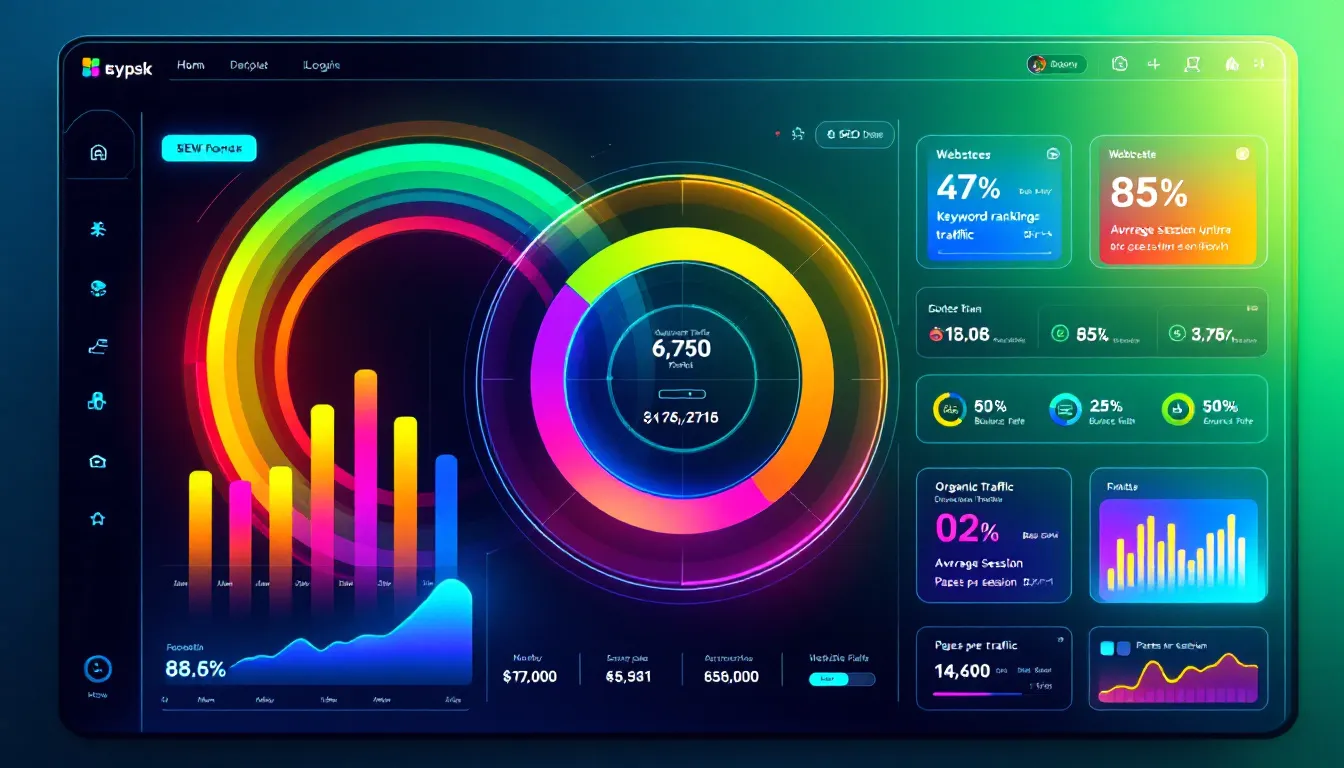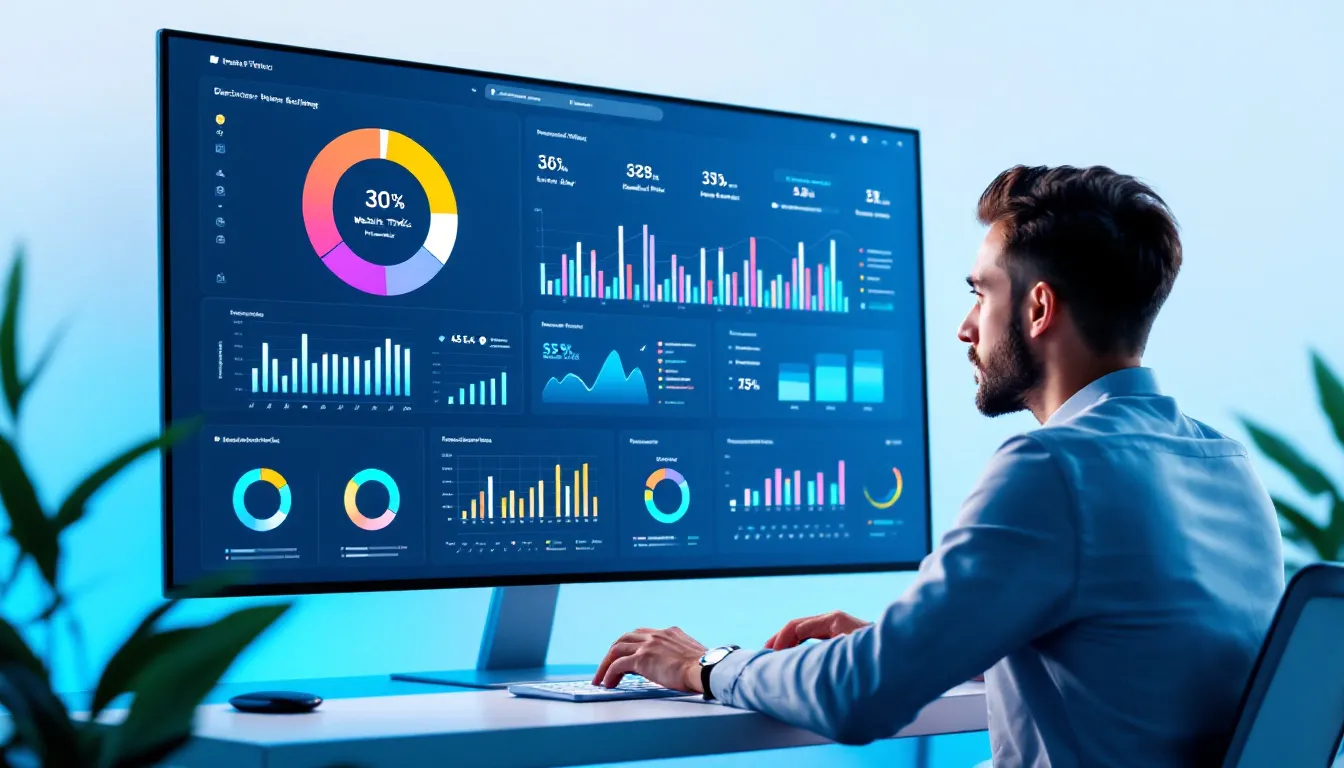Top 10 SEO Metrics to Boost Your Ranking Today

SEO metrics help you understand your website’s performance and identify areas for improvement. This article covers the essential metrics to track for better rankings and optimized marketing.
Key Takeaways
- SEO metrics are crucial for understanding website performance and making informed decisions to improve search engine rankings.
- Key metrics to track include Organic Traffic, Keyword Rankings, Bounce Rate, Backlinks, and Core Web Vitals to get a comprehensive view of your SEO health.
- Regular evaluation and adjustment of your strategies using these metrics can lead to better long-term SEO results and prevent common tracking mistakes.
Understanding SEO Metrics

Metrics for SEO are the essential pulse that drives your digital marketing activities. They provide quantifiable indicators of your website content’s effectiveness and highlight potential areas for improvement. By continuously monitoring these metrics, you gain crucial insights into assessing SEO performance on search engines and can pinpoint both strong points and shortcomings among various SEO performance metrics.
Frequent analysis of these metrics is key to showcasing sustained advancements to interested parties. The endeavor involved in SEO can be demanding due to its prolonged timeline before yielding financial returns.
Nevertheless, Core Web Vitals along with engagement metrics play a critical role as they inform choices related to content strategy while ensuring your site remains finely tuned for optimal functioning with both search engines and users in mind.
Essential SEO Metrics to Track

Concentrating on the appropriate SEO metrics can enhance your overall strategy. These indicators reveal patterns that unfold over an extended period, offering insights into how successfully your website is performing in terms of search engine visibility.
Essential key metrics to monitor encompass Organic Traffic, Keyword Rankings, Organic Conversions, Bounce Rate, Backlinks and Referring Domains, Domain Authority, Average Click-Through Rate (CTR), Core Web Vitals, Mobile Traffic and Crawl Errors among additional SEO parameters. Keeping tabs on this extensive range of metrics enables a thorough analysis of both your SEO endeavors and business outcomes.
Every one of these vital SEO metrics holds its own distinct importance as well as methodologies for tracking their performance.
Organic Traffic
Visitors who reach your site via search engines such as Google and Bing constitute organic traffic. Keeping an eye on this type of traffic is crucial for boosting it, reflecting advancements in search rankings, and gauging the success of SEO initiatives.
To oversee organic search traffic specific to your target audience, utilize Google Analytics by heading to the Audience Overview section. Clarity on the particular keywords propelling website traffic and enhancing search visibility can be gained through activating reports from Google Search Console. The metric ‘Total Clicks’ stands out because it reveals the effectiveness with which you are able to monitor organic traffic using SEO techniques aimed at drawing visitors.
Keyword Rankings
The success of your SEO strategies for particular search terms is indicated by keyword rankings, as they can lead to an increase in targeted traffic visiting your website. The general trajectory of your SEO endeavors and how well you are doing at aiming for specific keywords is shown by the keyword ranking.
SEMrush, Moz, and Ahrefs stand out as top-notch resources for monitoring rank and evaluating performance related to tracking keyword rankings. When there’s an uptick in the position for a single keyword, it frequently hints at broader improvements across overall rankings.
Organic Conversions
Assessing organic conversions is crucial to understanding the value of your organic search traffic and click-through rate (CTR). These metrics provide details on the behavior of users arriving through organic search, giving you valuable information about conversion patterns and guiding you in monitoring the economic benefits stemming from your SEO campaigns.
By employing Google Analytics, it’s possible to monitor how effectively your SEO tactics are at converting incoming visitors into leads or buyers by tracking conversion activity resulting from organic search. This analysis aids in gauging the success of your marketing endeavors.
Bounce Rate
Bounce Rate measures the percentage of visitors who leave a webpage without taking any action. A high bounce rate may suggest visitors are not finding relevant content or engaging with your website.
Google Analytics shows engagement metrics including pages per session, average time per session, and bounce rate on landing pages and other pages. Understanding how many pages and the page layout on a particular page these metrics help in making necessary adjustments to improve user engagement on the landing page.
Backlinks and Referring Domains
The influence of both the number and quality of high-quality backlinks is pronounced on a website’s authority and its positioning within search results. It’s crucial to monitor the backlinks acquired from link-building endeavors to determine their impact.
Observing the count of distinct referring domains that are linking to your site is critical for grasping the extent and diversity of your site’s backlink profile. Utilizing platforms such as Ahrefs, Moz, or SEMrush can facilitate tracking these indicators effectively. It is vital to keep an eye on how your tally of lost or new backlinks evolves over time.
Domain Authority
Domain authority is a metric that estimates the probability of a website ranking in search results. Higher domain authority indicates greater chances of achieving top positions. Tools such as Moz are utilized to monitor this metric, which aids in evaluating the credibility and competitive ranking capability of your site.
Average Click-Through Rate (CTR)
A higher CTR implies that more searchers find your titles and descriptions appealing enough to click on. Click-Through Rate (CTR) measures the ratio of clicks to impressions on search engine results pages (SERPs), and the average ctr reflects this performance.
Improving title and meta description tags can increase CTR. Better CTR can lead to higher rankings and enhanced overall SEO performance.
Core Web Vitals
Google assesses the user experience of a website by measuring specific metrics such as page load time, visual stability, and interactivity through Core Web Vitals. The performance on these metrics is crucial to improving user experience and is detailed in the core web vitals report, which can have significant implications for your site’s SEO performance.
By improving these key indicators, you can greatly increase user contentment along with achieving better SEO success and climbing up in search rankings.
Mobile Traffic
As mobile devices become the primary means of accessing the web, it’s crucial to track mobile traffic. Utilizing Google Analytics allows for an in-depth look at how mobile users engage with your site, which aids in tailoring user experiences for those on mobile and enhancing your site’s SEO performance overall.
Crawl Errors
When search engines experience difficulties that hinder them from effectively indexing the pages of your website, crawl errors arise. Conducting regular SEO audits is crucial for detecting and correcting these issues, which ensures that all pertinent content can be found in searches and enhances your overall SEO performance.
Tools for Tracking SEO Metrics

Employing appropriate SEO tools to monitor key performance indicators is essential for gauging and keeping an eye on your website’s success. For these tasks, Google Search Console and Google Analytics are invaluable resources, offering comprehensive data about organic traffic, keyword rankings, among other metrics.
Platforms such as AgencyAnalytics and DashThis can streamline the monitoring process by automating the aggregation of information from multiple sources. These systems serve as a one-stop location for analysis and facilitate straightforward detection of various elements including universal analytics, data points related to performance issues like crawl errors along with providing insights into data trends and featuring a position tracking tool that enables users to conveniently track their online standing.
Automating SEO Reporting

By automating SEO reporting, time is saved and insights into key performance indicators are sharpened. This automation enables the efficient collection of SEO data with minimal manual effort, improving teamwork through the straightforward sharing of insights and tailoring the ideal SEO report to particular KPIs.
These automated reports can encompass information on technical SEO challenges, allowing teams to swiftly rectify issues before they detrimentally affect performance.
How to Use SEO Metrics to Improve Your Strategy

Effectively leveraging metrics from search engine optimization can substantially refine your SEO strategy, as it yields crucial insights. By consistently reviewing these metrics, you’re able to pinpoint what’s working and recognize where enhancements are needed, enabling targeted modifications that boost overall performance.
It is critical to establish precise objectives for improvement. Determine the particular metrics you aim to enhance—for instance, organic traffic or conversion rates—and routinely monitor and tweak your SEO campaign in accordance with these indicators for improved outcomes over time.
Implementing A/B testing allows for a clear comparison between different content strategies by observing how various versions perform against each other, thereby assessing their impact on effectiveness.
Common Mistakes to Avoid When Tracking SEO Metrics
To effectively monitor SEO performance, it is crucial to sidestep prevalent errors in the tracking of SEO metrics. A significant oversight occurs when a multi-metric tracking approach isn’t utilized, which is necessary for attaining an all-encompassing view of how well your SEO efforts are doing.
If you concentrate exclusively on immediate metrics or overlook your competitors’ activities, there’s a risk that you might misread how well your strategies are working. To acquire valuable insights and make precise evaluations of your progress, be sure to measure pertinent metrics that correspond with the objectives set by your business.
Summary
Monitoring the top 10 SEO metrics can revolutionize your approach to digital marketing. Metrics ranging from organic traffic to crawl errors each offer critical insights, helping you shape a more effective SEO strategy. Continually assessing and fine-tuning your tactics according to these measurements can substantially enhance how well your website performs.
Keep in mind that achieving SEO success is a continuous process. Persistently track, examine, and refine your strategies to maintain an edge within the competitive realm of digital marketing. By embracing these metrics, you’ll position yourself for higher search rankings.
Frequently Asked Questions
Why are SEO metrics important?
SEO metrics are crucial because they give you measurable insights into how your website is performing, highlighting areas where you can improve your strategy.
By understanding these metrics, you can make data-driven decisions to boost your site’s visibility.
How can I track organic traffic?
To effectively track organic traffic, just set up Google Analytics and link it with Google Search Console.
This combo will give you valuable insights on your audience and the keywords driving traffic to your site.
What tools are best for tracking keyword rankings?
SEMrush, Moz, and Ahrefs are some of the best tools for tracking keyword rankings and analyzing performance. They provide robust insights to help you enhance your SEO strategy.
Why is monitoring bounce rate important?
Monitoring bounce rate is crucial because it shows how effectively your site engages visitors; a high bounce rate can mean they’re not finding what they’re looking for.
Taking action on this can help improve your site’s relevance and user experience.
How can automated SEO reporting benefit my team?
Automated SEO reporting can save your team valuable time and improve insights on key performance indicators.
Plus, it makes sharing and customizing reports a breeze, enhancing collaboration.




